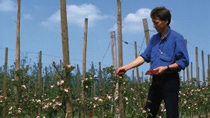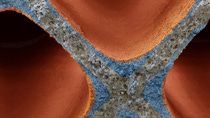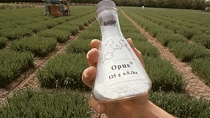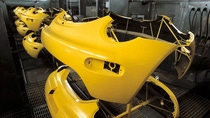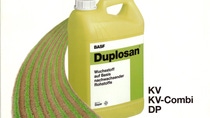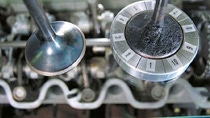Products For More Sustainability
With its commitment to sustainability, BASF also focused on its product portfolio. Its products had made a contribution to society and the environment before this, however: Prominent examples are ammonia synthesis which enabled the synthetic production of fertilizers from 1913 and Styropor, BASF’s classic insulating material developed in 1951.
But unlike in the past, BASF increasingly aligned its product portfolio toward sustainability after 1994, and in an ever more systematic way. The company’s climate protection products were a milestone in this respect. These were its first products for which the contribution to sustainability was quantified throughout the BASF value chain, through the BASF corporate carbon footprint in 2008. Efficient and environmentally friendly insulating materials, such as Neopor or Basotect, were also included in this calculation, as well as plastic components for the automotive industry or materials for wind turbines (Baxxodur). While BASF customers could prevent 252 million metric tons of CO2 emissions by using these products back then, 10 years later (2018) this sum had risen to 640 million metric tons.
Today, BASF climate protection products are among the “Accelerator” solutions, which BASF has determined since 2013 using the Sustainable Solution Steering method. This method allows the BASF portfolio to be steered on the basis of the contribution its products make to sustainability. As Accelerator products make a particular contribution to sustainability in the value chain, BASF has set an ambitious new goal: From 2019 to 2025, the company aims to increase its sales of Accelerator solutions to €22 billion.
Here is just a small selection of BASF products for more sustainability – with a history.
